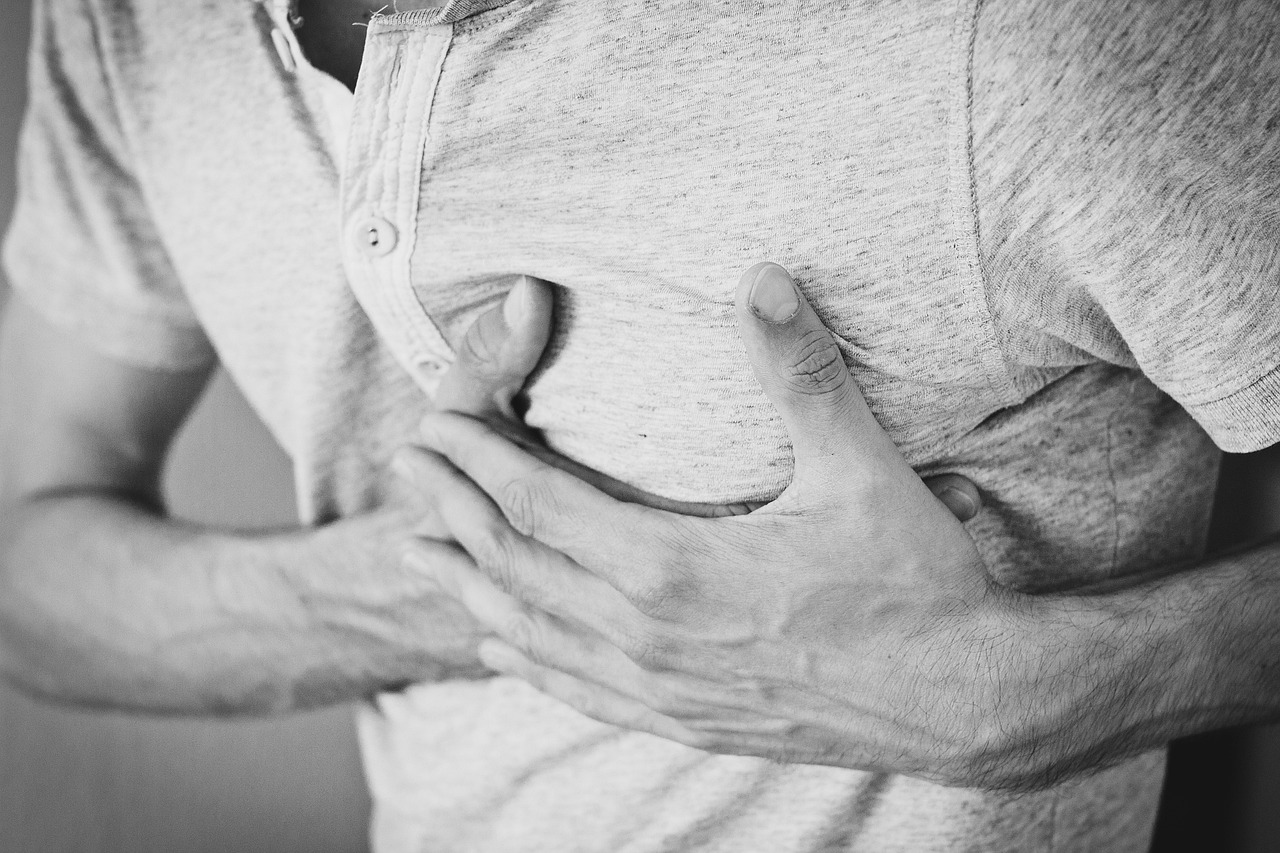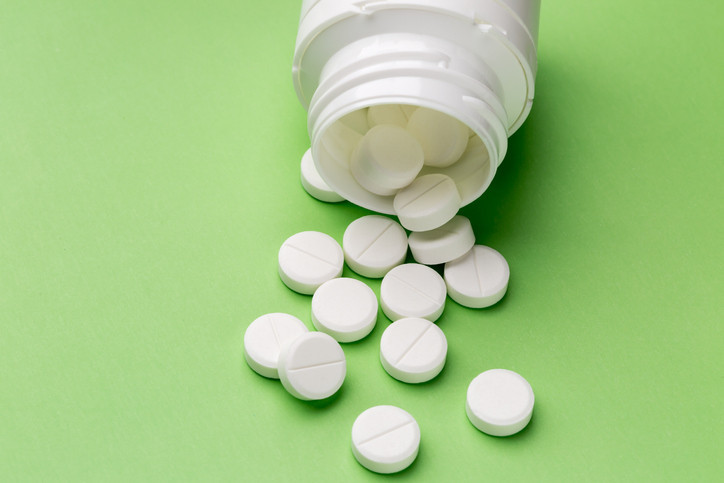Introduction
A heart attack is a life-threatening medical emergency that occurs when the blood flow to a section of the heart muscle becomes blocked, often due to a blood clot. Prompt recognition of the signs and symptoms of a heart attack is crucial because immediate medical intervention can greatly improve the chances of survival and minimize heart damage. In this article, we will discuss the common signs of a heart attack and the importance of recognizing them early.
Recognizing the Signs of a Heart Attack: A Guide to Early Detection and Response
A heart attack, also known as a myocardial infarction, is a frightening and potentially life-threatening event that can strike anyone, regardless of age or gender. It occurs when the blood flow to a part of the heart is severely reduced or completely blocked, typically due to the formation of a blood clot in a coronary artery. The lack of oxygen-rich blood can cause damage to the heart muscle, and in severe cases, it can lead to cardiac arrest.
The importance of early recognition and response to the signs and symptoms of a heart attack cannot be overstated. Quick action can be the difference between life and death, as well as the extent of heart muscle damage. Therefore, it’s essential for everyone to be aware of the common indicators of a heart attack and know what steps to take if they or someone around them experiences these symptoms.
Common Signs and Symptoms of a Heart Attack
Chest Pain or Discomfort: This is the most classic symptom of a heart attack. The pain is often described as a heavy pressure, squeezing, fullness, or pain in the center or left side of the chest. It may last for a few minutes or come and go.
Radiating Pain: Chest pain can radiate to other areas of the upper body, including the arms (usually the left arm), neck, jaw, and back.
Shortness of Breath: Feeling breathless, even at rest, or experiencing difficulty breathing can be a sign of a heart attack.
Cold Sweats: Profuse sweating, especially when combined with other symptoms, can be indicative of a heart attack.
Nausea or Vomiting: Some individuals may feel nauseated or vomit during a heart attack.
Lightheadedness or Dizziness: Feeling faint, dizzy, or light-headed can occur before or during a heart attack.
Extreme Fatigue: Unusual and overwhelming fatigue, often described as “unexplained tiredness,” can be a warning sign.
What to Do If You Suspect a Heart Attack
If you or someone near you is experiencing the symptoms of a heart attack, it’s crucial to take immediate action:
Call 911: Do not delay. Call for emergency medical assistance immediately. The sooner medical professionals arrive, the better the chances of a positive outcome.
Chew Aspirin: If the person having a heart attack is conscious and not allergic to aspirin, it’s often recommended to chew and swallow an aspirin. Aspirin can help prevent further blood clotting.
Stay Calm: Encourage the individual to sit down, rest, and try to remain as calm as possible. Stress and anxiety can exacerbate the situation.
Be Prepared to Perform CPR: If the person becomes unconscious and stops breathing, be prepared to administer cardiopulmonary resuscitation (CPR) until professional help arrives. Many online courses offer basic CPR training.
Don’t Drive to the Hospital: It’s safer to wait for an ambulance. They are equipped to provide immediate care and can communicate with the hospital en route.
Recognizing the signs of a heart attack and taking swift action can save lives and limit heart muscle damage. Remember that heart attacks can present differently in men and women, and sometimes the symptoms can be subtle. It’s better to err on the side of caution and seek medical help if there’s any suspicion of a heart attack. Being informed and prepared can make all the difference in a life-threatening situation.
For a comprehensive look at this subject, we invite you to read more on this dedicated page: Responding to Emergencies: – Comprehensive First Aid/CPR/AED
Understanding the Heart Attack Process
Before delving into the signs of a heart attack, it’s essential to understand the underlying process. The heart is a powerful muscle that pumps oxygen-rich blood to the body’s vital organs. When a coronary artery becomes blocked, it deprives a portion of the heart muscle of oxygen and nutrients. The longer the blockage persists, the more damage occurs. Therefore, swift action is vital.
To comprehend the signs of a heart attack fully, it’s crucial to delve into the intricate process that underlies this critical medical event. The heart, often described as the body’s relentless workhorse, tirelessly pumps oxygen-rich blood to all of our vital organs. This continuous circulation sustains life itself, ensuring that every cell in our body receives the oxygen and nutrients it needs to function optimally.
However, when a coronary artery, responsible for supplying blood to the heart muscle itself, becomes blocked, a cascade of potentially life-threatening events unfolds. The blockage restricts the flow of blood, effectively cutting off the heart muscle from its own oxygen and nutrient supply. It’s akin to choking off a vital lifeline.
Here’s where the urgency of recognizing the signs of a heart attack becomes evident. Time is of the essence because, without prompt intervention, the consequences can be dire. The longer the coronary artery remains obstructed, the more extensive the damage to the heart muscle. This damage can be irreversible, leading to complications such as heart failure or even death.
Swift action in response to the signs of a heart attack is not just advisable; it’s absolutely critical. Recognizing these signs and seeking immediate medical attention can mean the difference between life and death. Every minute counts when it comes to restoring blood flow to the heart muscle and minimizing the damage caused by the blockage.
In essence, understanding the process behind a heart attack highlights the urgency of recognizing its signs and acting promptly. The heart’s relentless beat is a testament to its importance, and any interruption in its function demands immediate attention. It’s a stark reminder that our awareness of these signs can be a lifesaving knowledge, not just for ourselves but for those around us as well.
If you’d like to dive deeper into this subject, there’s more to discover on this page: Heart failure – Symptoms and causes – Mayo Clinic

Chest Pain or Discomfort
The most classic symptom of a heart attack is chest pain or discomfort. This pain is often described as a feeling of pressure, squeezing, fullness, or burning in the chest. It may last for a few minutes or come and go.
The most classic symptom of a heart attack, chest pain or discomfort, is an unmistakable signal from the body. This sensation is often described as a heavy pressure, an intense squeezing, a deep fullness, or even a burning sensation centered in the chest. However, what’s critical to understand is that the pain can vary widely from person to person.
For some, it’s an intense, crushing pain that feels like an elephant sitting on the chest. For others, it might be a more subtle discomfort that comes and goes, almost like a nagging ache. Sometimes, the pain can radiate beyond the chest, affecting the arms, neck, jaw, or back. It’s essential to note that these variations in symptoms can make it challenging to recognize a heart attack, especially if it doesn’t fit the stereotypical Hollywood portrayal.
But regardless of how it manifests, chest pain during a heart attack is a call for immediate attention. Time is of the essence when it comes to heart attacks, and seeking medical help promptly can be the difference between life and death. It’s crucial to remember that not everyone experiences the same symptoms, so being aware of these variations and taking any unusual chest discomfort seriously can save lives.
Additionally, you can find further information on this topic by visiting this page: Can You Recognize a Heart Attack or Stroke? | NIH News in Health

Pain in Other Areas
The pain may radiate beyond the chest to the arms (usually the left arm but can also affect the right arm), the neck, jaw, shoulder blades, or back.
In addition to radiating pain in various areas, a heart attack may also manifest with other symptoms. These can include shortness of breath, cold sweats, nausea, and lightheadedness. It’s crucial to recognize that heart attack symptoms can vary between individuals, and some people may not experience chest pain at all. If you or someone you’re with is experiencing any combination of these symptoms, seek immediate medical attention, as early intervention is critical in the event of a heart attack.
You can also read more about this here: Heart Attack Symptoms, Risk, and Recovery | cdc.gov

Shortness of Breath
Feeling out of breath, especially when it’s accompanied by chest discomfort, can be a sign of a heart attack.
Feeling out of breath, especially when it’s accompanied by chest discomfort, can indeed be a significant and concerning sign of a heart attack. Shortness of breath, medically known as dyspnea, is often associated with heart issues and can manifest in various ways during a heart attack.
Here’s a closer look at the relationship between shortness of breath and heart attacks:
1. Reduced Oxygen Supply: During a heart attack, a section of the heart muscle is deprived of oxygen-rich blood due to a blockage in the coronary artery. This lack of oxygen can lead to chest pain or discomfort, as well as shortness of breath.
2. Overworked Heart: The heart works harder to pump blood when one or more of its coronary arteries is blocked. This increased workload can cause the sensation of breathlessness, especially if the heart is struggling to maintain adequate blood flow to vital organs.
3. Radiation of Symptoms: The discomfort or pain caused by a heart attack can radiate to various parts of the upper body, including the neck, jaw, back, and arms. When this discomfort extends to the neck or jaw, it can further contribute to a feeling of breathlessness.
4. Anxiety and Stress: The emotional and psychological stress of experiencing chest pain or discomfort can also lead to shortness of breath. This is particularly true if the individual becomes anxious or fearful about what’s happening.
5. Fluid Accumulation: In some cases, heart failure can occur as a complication of a heart attack. This can lead to fluid accumulation in the lungs, a condition known as pulmonary edema, which severely impairs breathing.
It’s important to emphasize that not all instances of shortness of breath are due to a heart attack. Many other medical conditions, such as lung issues, anxiety disorders, or physical exertion, can also lead to dyspnea. However, when shortness of breath occurs in combination with other classic heart attack symptoms like chest pain or discomfort, it should be taken seriously.
If someone experiences sudden and unexplained shortness of breath, especially if it’s accompanied by chest discomfort, it’s essential to call 911 or seek emergency medical attention immediately. Early intervention can make a substantial difference in the outcome of a heart attack, and healthcare professionals can quickly assess the situation and provide appropriate treatment. Remember, it’s always better to err on the side of caution when dealing with potential heart-related symptoms.
For a comprehensive look at this subject, we invite you to read more on this dedicated page: Heart Attack Symptoms, Risk, and Recovery | cdc.gov

Cold Sweats
Profuse sweating, often accompanied by a sense of impending doom, is another warning sign.
Profuse sweating, often accompanied by a sense of impending doom, serves as a powerful and unmistakable warning sign that the body is in distress. When it comes to the context of a potential heart attack, this symptom takes on added significance.
The body’s response to stress or imminent danger is often marked by a surge of adrenaline. In the case of a heart attack, this rush of adrenaline can lead to profuse sweating. It’s as if the body is trying to cool itself down, but the underlying cause is something far more serious than the typical exertion that prompts sweating.
The accompanying feeling of impending doom is equally noteworthy. While it may sound subjective, many individuals who have experienced heart attacks describe an overwhelming sense of anxiety or dread that comes out of nowhere. This feeling can be so intense that it prompts them to seek help urgently, and it’s a sensation that should not be underestimated.
When profuse sweating and a sense of impending doom occur together, they should never be dismissed as mere discomfort. Instead, they should be recognized as potential signs of a heart attack and treated with the utmost seriousness. This combination of symptoms often indicates that the heart is struggling, and immediate medical attention is essential to assess and address the situation.
In summary, profuse sweating and an overpowering sense of impending doom are not symptoms to be taken lightly. They are the body’s way of signaling that something is profoundly wrong, and when it comes to heart health, quick action can be the key to saving a life. Recognizing these signs and seeking immediate medical care can make all the difference in the outcome of a potential heart attack.
Additionally, you can find further information on this topic by visiting this page: Heart Attack, Stroke and Cardiac Arrest Symptoms | American Heart …

Nausea or Vomiting
Some people may feel nauseated or vomit during a heart attack.
During a heart attack, it’s not uncommon for some individuals to experience nausea or even vomit. This additional symptom can be particularly distressing, as it compounds the already intense discomfort and fear associated with a heart attack.
Nausea and vomiting can occur for several reasons during a heart attack. Firstly, the body’s stress response to the heart attack can trigger nausea as the body redirects blood flow away from the digestive system and towards the heart and muscles. This redirection of blood can disrupt the normal digestive processes and lead to a queasy feeling.
Secondly, the pain and anxiety associated with a heart attack can directly stimulate the vomiting center in the brain, causing the urge to vomit. This response is the body’s way of trying to relieve stress and discomfort.
It’s essential to recognize that not everyone who has a heart attack will experience nausea or vomiting. Symptoms can vary widely from person to person. However, if you or someone you’re with does experience these symptoms, it’s crucial not to dismiss them. Nausea and vomiting, in conjunction with other heart attack symptoms like chest pain, shortness of breath, or radiating discomfort, should be taken seriously, and emergency medical assistance should be sought immediately.
In such situations, swift action can make a critical difference in saving a life and minimizing the damage caused by a heart attack.
Should you desire more in-depth information, it’s available for your perusal on this page: Heart Attack Symptoms, Risk, and Recovery | cdc.gov

Light-headedness
Feeling faint or dizzy can occur, often as a result of decreased blood flow to the brain.
Feeling faint or dizzy can indeed be concerning, and it’s essential to understand the potential causes. Reduced blood flow to the brain, which can occur due to various factors, is a common reason for these sensations. Dehydration, low blood sugar (hypoglycemia), and sudden changes in position, such as getting up too quickly (orthostatic hypotension), can all lead to dizziness.
Furthermore, dizziness can be a symptom of underlying medical conditions like anemia, inner ear problems, or even heart issues. Therefore, it’s crucial not to ignore persistent or unexplained dizziness. If you or someone you know experiences frequent bouts of dizziness, especially if accompanied by other concerning symptoms like chest pain, shortness of breath, or severe headache, seeking medical advice is advisable. Identifying and addressing the root cause of dizziness can help prevent complications and improve overall well-being.
For a comprehensive look at this subject, we invite you to read more on this dedicated page: 4 Silent Heart Attack Signs – Penn Medicine

Unusual Fatigue
Sudden and extreme fatigue, without an obvious cause, is sometimes a symptom of a heart attack, especially in women.
Sudden and extreme fatigue, when it occurs unexpectedly and without an apparent cause, can indeed be a symptom of a heart attack, and it’s particularly important to recognize this in women. While chest pain is a well-known sign of a heart attack, women may experience different or subtler symptoms, and extreme fatigue is one of them.
Here’s why sudden fatigue can be a significant indicator, especially for women:
1. Atypical Symptoms: Women may not always experience the classic chest pain or discomfort associated with heart attacks. Instead, they are more likely to have atypical symptoms like fatigue, shortness of breath, nausea, and discomfort in the neck, jaw, back, or abdomen.
2. Silent Heart Attacks: Some heart attacks, often called “silent heart attacks,” can occur with minimal or no noticeable symptoms. In these cases, sudden fatigue may be one of the few signs, and it should not be ignored.
3. Fatigue and Heart Function: The heart’s primary function is to pump oxygen-rich blood to the body’s tissues and organs. When the heart muscle is compromised during a heart attack, it may struggle to perform this function efficiently, leading to feelings of extreme fatigue and weakness.
4. Hormonal Factors: Hormonal changes in women, such as those associated with menopause, can affect the cardiovascular system. These changes can sometimes mask or alter the perception of heart attack symptoms.
5. Delayed Recognition: Due to the misconception that heart attacks predominantly affect men and present with severe chest pain, women may not immediately recognize or seek medical attention for their symptoms, including sudden fatigue.
It’s crucial for both men and women to be aware of the potential signs of a heart attack and not dismiss extreme fatigue as simply feeling tired. If someone, especially a woman, experiences sudden and unexplained fatigue along with other concerning symptoms like shortness of breath, nausea, or discomfort, it’s vital to seek emergency medical help promptly.
Recognizing and acting on these symptoms early can make a significant difference in the outcome of a heart attack. Calling 911 or going to the nearest emergency room is the safest course of action. Heart attacks require immediate medical attention, and the sooner treatment is initiated, the better the chances of minimizing damage to the heart muscle and improving overall recovery prospects.
If you’d like to dive deeper into this subject, there’s more to discover on this page: Cardiac Arrest – Symptoms | NHLBI, NIH

Irregular Heartbeat
Some individuals may experience palpitations or an irregular heartbeat during a heart attack.
During a heart attack, when the heart muscle is deprived of oxygen-rich blood due to a blocked coronary artery, the body often responds with various distress signals, one of which can be palpitations or an irregular heartbeat. This particular symptom can be a frightening and unsettling experience for those going through it.
Palpitations are often described as a racing, pounding, or fluttering sensation in the chest. It can feel as if the heart is beating too fast, too hard, or in an irregular pattern. The underlying cause of these palpitations during a heart attack is the heart’s attempt to compensate for the reduced blood flow by working harder and beating faster. It’s a desperate effort to supply the body with enough oxygen despite the obstruction.
Experiencing palpitations during a heart attack can be accompanied by a profound sense of unease and anxiety. The irregularity in the heartbeat can contribute to feelings of fear and discomfort, further intensifying the overall distress caused by the heart attack itself.
Recognizing palpitations as a potential symptom of a heart attack is vital because it underscores the urgency of the situation. It’s a sign that the heart is under significant strain and needs immediate medical attention. While not everyone may experience palpitations during a heart attack, those who do should take it as a clear warning and seek medical help without delay.
In essence, palpitations or an irregular heartbeat during a heart attack are a distressing manifestation of the heart’s struggle to cope with a lack of oxygen. These symptoms should never be dismissed as benign, as they can be a critical piece of the puzzle when identifying a heart attack. Responding promptly and appropriately to these signs can be a life-saving decision.
Looking for more insights? You’ll find them right here in our extended coverage: Recognizing COVID-19–related myocarditis: The possible …

Immediate Action
If you or someone you are with experiences any of these signs and symptoms, it’s essential to take immediate action:
If you or someone you are with experiences any of these signs and symptoms, it’s absolutely vital to take immediate action. Ignoring or downplaying these warning signals can have serious and potentially life-threatening consequences. Here’s what you should do:
Call 911 or Emergency Services: The very first step is to dial 911 or the emergency services number in your region. Don’t delay or second-guess the situation. Time is a critical factor when dealing with a potential heart attack, and medical professionals need to assess the situation as soon as possible.
Chew Aspirin (if available): If you have aspirin on hand and the person isn’t allergic to it, have them chew and swallow one regular aspirin (not enteric-coated). Aspirin can help by reducing blood clotting, which is often a contributing factor in heart attacks.
Stay Calm and Keep the Person Calm: Panic can exacerbate the situation. Encourage the person to stay as calm as possible and try to keep them comfortable. Sit them down, reassure them, and offer support.
Do Not Drive Yourself or the Person Affected to the Hospital: Ambulance personnel are trained to handle cardiac emergencies and can provide critical care en route to the hospital. Driving yourself or the affected person may lead to complications and delays in receiving proper medical attention.
Avoid Food or Drink: Refrain from giving the person anything to eat or drink. This can help prevent choking if vomiting occurs.
Monitor the Person’s Condition: While waiting for emergency services to arrive, keep a close eye on the person’s condition. If they become unconscious and unresponsive, you may need to perform CPR if you are trained to do so.
Remember, acting quickly is crucial when dealing with a potential heart attack. Erring on the side of caution is always the best approach when it comes to heart health. It’s better to have a false alarm than to delay seeking help when it’s genuinely needed.
To delve further into this matter, we encourage you to check out the additional resources provided here: Heart Attack Signs, Symptoms and Emergency Treatment
Call 911
Don’t hesitate. Call for emergency medical assistance. Even if you’re not entirely sure it’s a heart attack, it’s better to be safe than sorry.
Absolutely, when it comes to potential heart-related issues, it’s always better to err on the side of caution. If you or someone you’re with experiences symptoms that could indicate a heart attack, such as chest pain, shortness of breath, nausea, or discomfort in the arms, neck, jaw, or back, calling for emergency medical assistance should be your immediate response.
A heart attack is a medical emergency, and prompt intervention can be life-saving. Paramedics and medical professionals are trained to assess and provide the necessary care, which may include medications or procedures to restore blood flow to the heart. Acting quickly can make a significant difference in the outcome and recovery from a heart attack.
Remember, it’s not your responsibility to diagnose the situation. Even if you’re uncertain whether it’s a heart attack or not, calling for help is the right thing to do. It’s far better to have professionals assess the situation and provide the appropriate care than to delay seeking help. Time is of the essence in such critical situations, and swift action can save lives.
Don’t stop here; you can continue your exploration by following this link for more details: Sudden cardiac arrest – Symptoms and causes – Mayo Clinic

Chew Aspirin
If you have aspirin available and are not allergic to it, chew one aspirin tablet (typically 325 mg). Aspirin can help to prevent further blood clot formation.
Taking aspirin during a suspected heart attack can indeed be a potentially life-saving action, but it’s essential to do so correctly and under specific circumstances. Here’s an extended idea regarding taking aspirin during a heart attack:
Immediate Aspirin Use as a First Aid Measure: When you suspect that you or someone near you is having a heart attack, time is of the essence. Aspirin, when taken promptly and correctly, can play a crucial role in improving the outcome. Here’s how it works:
1. Blood Clot Prevention: Heart attacks often occur due to a blockage in one of the coronary arteries, which supply oxygen and nutrients to the heart muscle. This blockage is typically caused by a blood clot. Aspirin is known for its blood-thinning properties, and it can help inhibit further clot formation.
2. Reducing Heart Muscle Damage: By preventing the clot from getting larger, aspirin can potentially minimize the damage to the heart muscle. The sooner aspirin is taken after the onset of symptoms, the better it can serve this purpose.
3. Dosage and Administration: The recommended dose of aspirin during a suspected heart attack is usually one adult-strength aspirin tablet, which is typically 325 milligrams. It’s essential to chew the aspirin instead of swallowing it whole. Chewing it allows the medication to be absorbed more rapidly through the bloodstream, which is vital during a heart attack.
4. Allergy and Contraindications: However, aspirin is not suitable for everyone, and there are potential contraindications. If you are allergic to aspirin, have a bleeding disorder, or have been advised not to take aspirin by a healthcare professional, you should not use it during a heart attack. Always consult with a healthcare provider if you have any doubts about taking aspirin.
5. Prompt Medical Attention: While taking aspirin can be a crucial first-aid measure, it should not replace seeking immediate medical attention. Even if you take aspirin, call 911 or your local emergency number right away. Only healthcare professionals can provide the necessary treatments, such as clot-busting medications or interventions like angioplasty, to restore blood flow to the heart.
In summary, chewing one adult-strength aspirin tablet during a suspected heart attack can be a valuable and potentially life-saving action, as it may help prevent further clot formation and reduce heart muscle damage. However, it should always be followed by seeking immediate medical help. Time is critical in treating a heart attack, and a healthcare provider can provide the necessary interventions to restore blood flow and minimize heart damage effectively.
Additionally, you can find further information on this topic by visiting this page: Heart attack: First aid – Mayo Clinic

Stay Calm
Try to remain as calm as possible while waiting for help to arrive.
Remaining calm in the face of an emergency is often easier said than done, but it is a crucial piece of advice that can make a significant difference in the outcome of a situation. When you find yourself in a challenging or potentially life-threatening circumstance and help is on the way, here are some reasons why staying calm is essential:
Clarity of Thought: Maintaining composure allows you to think more clearly. In an emergency, you may need to make quick decisions or provide information to first responders. A calm mind is more likely to assess the situation accurately and provide helpful details.
Reduced Panic: Panic can exacerbate the situation and cloud your judgment. When you stay calm, you are better equipped to manage fear and anxiety, preventing them from spiraling out of control.
Minimized Physical Stress: Stress and anxiety can have physical effects on your body, such as increased heart rate and shallow breathing. Staying calm can help keep these physical stress responses in check, reducing the strain on your body.
Effective Communication: Whether you’re explaining the situation to emergency services over the phone or providing assistance to someone in need, clear and composed communication is crucial. It ensures that your message is understood and acted upon swiftly.
Comfort to Others: If you are with others during an emergency, your calm demeanor can provide reassurance and support. It can help prevent the spread of panic and encourage everyone to cooperate and follow safety instructions.
Better Decision-Making: Calmness allows you to assess available options and choose the most appropriate course of action. It enables you to prioritize tasks and address the most pressing needs first.
Resilience: Staying composed during a crisis demonstrates resilience and can inspire those around you to remain focused and determined. It sets a positive example for handling adversity.
One way to help maintain composure is to take slow, deep breaths, which can help regulate your heart rate and reduce feelings of panic. Remind yourself that help is on the way and that there are professionals trained to assist in emergencies. By staying calm, you not only increase your chances of a favorable outcome but also contribute to a safer and more controlled environment for everyone involved.
If you’d like to dive deeper into this subject, there’s more to discover on this page: Warning signs of a heart attack | HealthPartners Blog

Conclusion
Recognizing the signs of a heart attack is a critical skill that can save lives. It’s important not to ignore or downplay these symptoms. Quick action can make the difference between life and death. If you or someone you know experiences any of the signs mentioned above, call 911 immediately. Remember, early intervention is key to a successful recovery from a heart attack, and every second counts.
Recognizing the signs of a heart attack is an invaluable skill that can truly make the difference between life and death. It’s crucial to understand that these symptoms are not to be taken lightly or brushed aside. Here’s why prompt action is so essential:
Time is Muscle: During a heart attack, the heart muscle is starved of oxygen-rich blood. The longer this deprivation continues, the more heart muscle can be permanently damaged or even die. Recognizing the signs early and seeking help promptly can minimize this damage.
Clot-Busting Medications: In some cases, clot-busting medications can be administered to dissolve the blood clot causing the heart attack. However, these medications are most effective when given within a specific time frame from the onset of symptoms. Delaying medical attention can reduce the effectiveness of these life-saving treatments.
Reopening Blocked Arteries: Medical procedures like angioplasty and stent placement are often used to reopen blocked arteries. Again, these interventions are most successful when performed promptly.
Preventing Complications: Quick action not only reduces the extent of heart muscle damage but also lowers the risk of complications that can arise from a heart attack, such as irregular heart rhythms or heart failure.
Saving Lives: Ultimately, early intervention can save lives. Heart attacks can be fatal, and the risk increases with each passing minute without treatment. Rapid response and appropriate medical care can significantly improve a person’s chances of survival.
So, if you or someone you know experiences any of the signs mentioned above—chest pain, shortness of breath, nausea, sweating, lightheadedness, or discomfort radiating to the arms, neck, jaw, or back—call 911 immediately. Don’t hesitate or assume it’s something less severe. Remember, when it comes to heart attacks, time is of the essence, and every second counts towards a successful recovery and, most importantly, saving a life.
Looking for more insights? You’ll find them right here in our extended coverage: Knowledge of Signs and Symptoms of Heart Attack and Stroke …
More links
Don’t stop here; you can continue your exploration by following this link for more details: Warning Signs of a Heart Attack | American Heart Association
